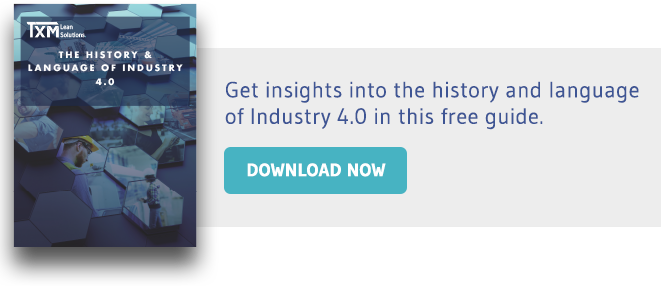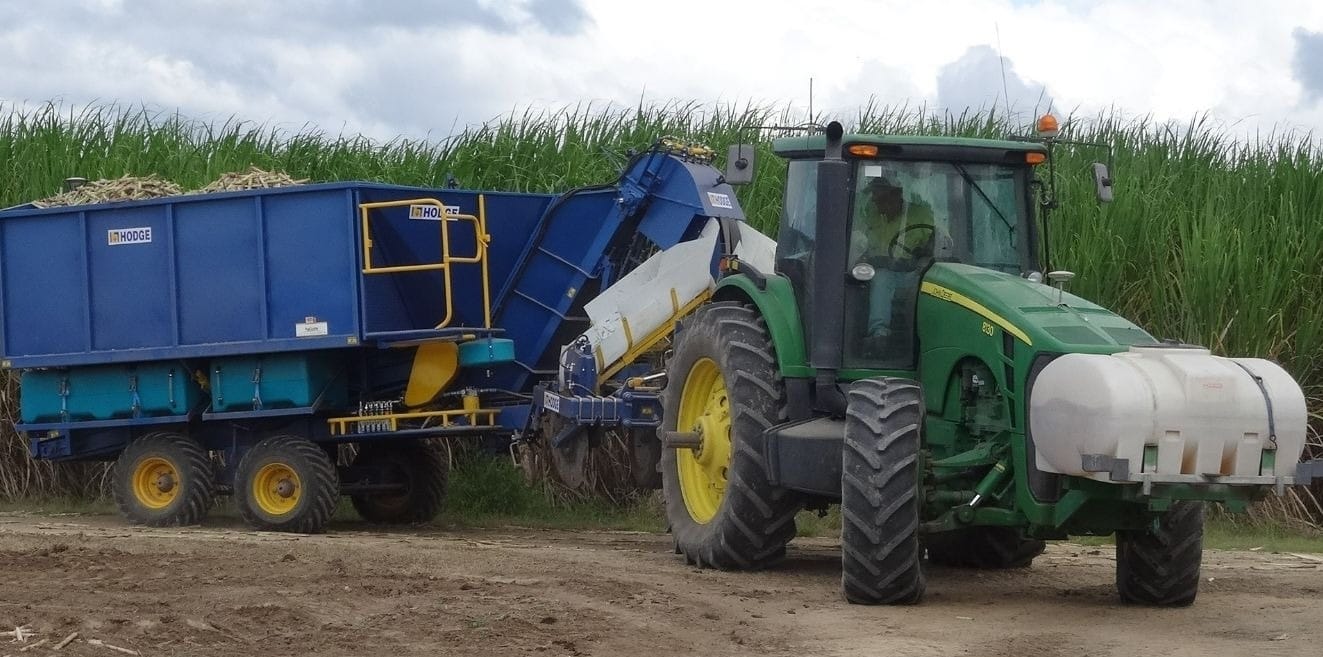Industry 4.0: When Investment in Technology Makes Sense – And When it Doesn’t

The past 20 years have seen a rapid acceleration of technological development. The internet, 5G mobile communications, 3D printing, artificial intelligence and machine learning are enabling more and more innovation in industrial technology. Collectively the impact of these new technologies are being called the fourth industrial revolution or Industry 4.0 for short. Businesses around the world are coming to grips with this new wave of technology, broad and what it means to them. So how do you decide what technology investments make sense?
It Is Important to Stay Up to Date With What is Happening
Technology is advancing so it is good to stay up to date. Take time to attend trade shows (including major international shows). At TXM we exhibit at a lot of trade shows. We find that trade shows often have themes, based on what the exhibitors see are the priorities of their target markets. This is often a good indicator of where things are going and what technologies are most likely to be adopted.
For example, at the Mach 2022 metal machining show in Birmingham, there were a lot of machines demonstrating the use of collaborative robots for part handling and loading. Likewise, I was impressed by the strides that have been made in metal 3D printing, which is increasingly becoming a mainstream technology, and in 3D laser scanning.
At the IMHX 2022 show in Birmingham it seemed that the growth in e-commerce was the dominant theme. Multiple exhibitors were displaying solutions for automated storage and retrieval systems along with high-speed automated sorting systems and automatic guided vehicles. All these technologies are adapted to a world of high volume, low value orders that e-commerce entails.
Apart from exhibitions, talk to suppliers and check out new technology online. Keep a close eye on competitors, but also observe what other industries are doing as there may be lessons for your industry, even if it is not changing yet.
How Do You Work Out Where to Start?
One of the toughest questions on any improvement journey is deciding where to start. In my experience, the most powerful tool for working out where to focus improvement efforts is a value stream map. By mapping your end-to-end value stream, you can see where the greatest areas of waste are and how they can be eliminated.
In many cases waste can be eliminated without investment, but once you have taken those quick wins, your value stream map can tell you where investments in technology to eliminate waste in product flows or streamline information flows can deliver the greatest value.
As well, value stream mapping starts with the question, “what does the customer really need?”. Spending time on this question and perhaps backing it up with some customer research, might reveal some innovative ways that you can leverage technology to meet a customer need that is not already met. This might mean offering shorter lead times, more choice or better features and benefits than your current products and processes can provide.
Today, most of the value stream maps we do at TXM involve helping customers with how to select or better integrate new business systems or process automation.
Isn’t It Just About Saving Labour?

When we read about Industry 4.0 or technology in the media, the focus is often on how machines will replace people. This is part of the picture, although economists will tell us that technological innovation has grown prosperity and jobs over time by raising productivity. In fact, it is often quite hard to justify investment in automation based purely on labour savings. Take robotics for example.
A relatively simple robot will cost at least $US100,000. To get a reasonable internal rate of return on that investment, the robot will need to completely replace two full time equivalent roles. As well, if the robot is tied to manufacture of a particular product, then you need some confidence that you will be producing that product long enough to justify the investment in the robot, because much of the capital cost is specific to a particular application. So, justifying automation just on labour saving is often hard to sustain.
On the other hand, if automation allows you to enter a new market or offer improved products or services, then the additional margin on the new sales can provide a strong payback on the investment. The companies that have leveraged technology most effectively have used it to offer better, faster services to customers, which has in turn driven revenue and margin growth.
Keep Technical Risk Manageable
I often hear business owners and managers say that they want to “automate the process”. This can lead to expensive and overly ambitious attempts to “automate everything”. There are two problems with this approach. Firstly, the more you try to automate, and the more inter-connected that automation, the more complex the implementation becomes and the more likely it is that things won’t work as you expect them to.
One company we know invested over $1 million on a complex drilling robot that they spent months trying to commission. In the end they were able to replace it with a simple two access gantry and a commercial hand drill.
Secondly, an “automate everything” approach is likely to lead to wasted capital. In our experience, you will often find that the 80% of the benefit of automation is delivered by the first 20% of investment. By taking an incremental approach and identifying which automated systems and hardware deliver the greatest benefit, technical risk can be reduced, and financial returns maximised. One of our customers has become a leader in the use of automation in its industry through an incremental approach.
When they win a new product line, they focus on perfecting a manual process first. This allows them to optimise relatively low-cost improvements such as jigs and fixtures, refine the manufacturing process and gain confidence in the longevity of the product.
Once they have this level of confidence, they will automate the key process steps starting with those where they can apply proven technology to deliver a large benefit. They then progressively improve the production cell by expanding the use of automation and selectively pushing the limits of technology. Many of their production cells are now highly automated, delivering an almost unassailable competitive advantage, but few cells started out that way.
How to Avoid the Arms Race
Some industries get themselves trapped in a technological arms race. This occurs when businesses, focused on cost reduction, invest in bigger, faster more expensive equipment. Competitors then feel forced to match this investment (often by purchasing identical equipment). Inevitably, in a competitive market, the cost savings then get passed on to the customers through lower prices. This then means that the return on the investment is lost. Industries that get trapped in this arms race usually end up with poor financial returns and excess capacity.
Avoiding the arms race takes innovative thinking. It starts, as I explain above, with understanding customer value and identifying ways to leverage technology to deliver better value for customers. Importantly the technology itself is unlikely to deliver sustainable competitive advantage, rather it is the processes and thinking around the application of the technology that will give your company the edge.
Stay Up to Date, Get on Board and Make the Investments That Make Sense for Your Business and Your Customers
Modern business is now presented with a vast array of technological opportunities. Every business needs to keep up to date with the technology in its industry. The key to making the right investment choices and getting the best return on these investments is to focus on customer value.
Lean thinking and mapping your value stream can help you understand where the greatest leverage can be gained from technological innovation. Resist the temptation to just adopt technology because everyone else is. You need a clear business rationale for every investment.








